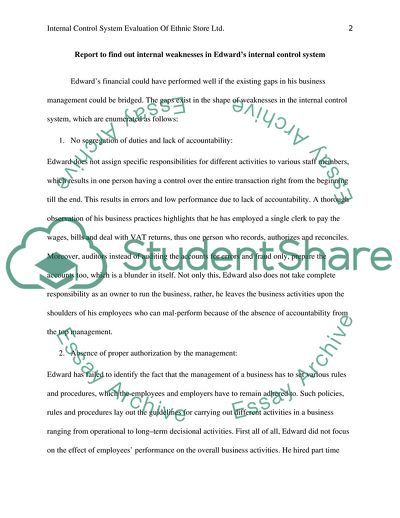Cite this document
(Internal Control System Evaluation of Ethnic Store Ltd Report, n.d.)
Internal Control System Evaluation of Ethnic Store Ltd Report. https://studentshare.org/finance-accounting/1737946-financial-systems-and-audit
Internal Control System Evaluation of Ethnic Store Ltd Report. https://studentshare.org/finance-accounting/1737946-financial-systems-and-audit
(Internal Control System Evaluation of Ethnic Store Ltd Report)
Internal Control System Evaluation of Ethnic Store Ltd Report. https://studentshare.org/finance-accounting/1737946-financial-systems-and-audit.
Internal Control System Evaluation of Ethnic Store Ltd Report. https://studentshare.org/finance-accounting/1737946-financial-systems-and-audit.
“Internal Control System Evaluation of Ethnic Store Ltd Report”. https://studentshare.org/finance-accounting/1737946-financial-systems-and-audit.


